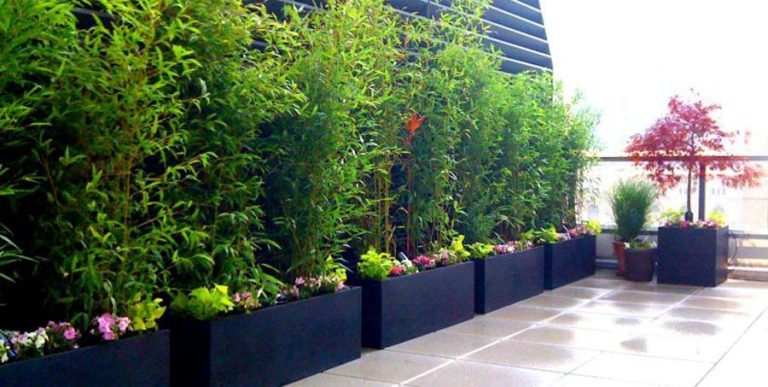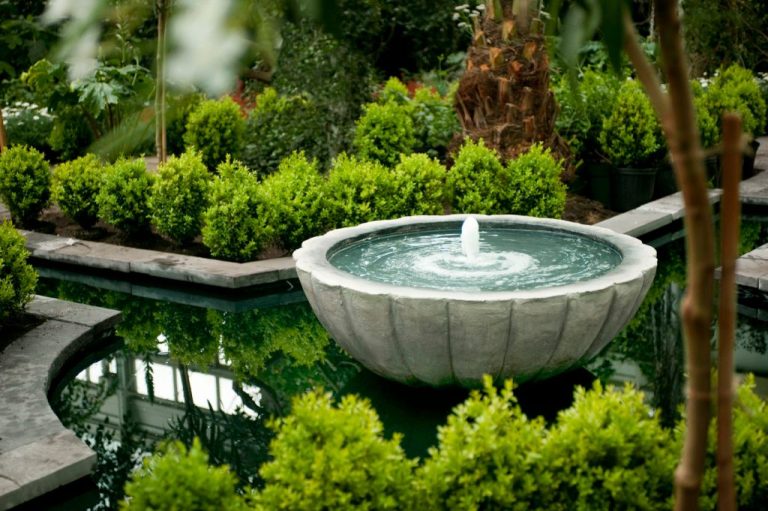Japanese Garden Design Principles: Creating Tranquility
Japanese gardens have a long history, dating back over 1,000 years to early Japanese aristocrats building gardens for relaxation and contemplation (The Aesthetics of Japanese Gardens). They drew inspiration from Chinese gardens but developed their own unique aesthetics and purpose over time. The main goal of a Japanese garden is to provide a serene, tranquil setting for relaxation and meditation.
Japanese gardens originated among the aristocracy but eventually spread to temples, palaces and homes of the elite as spaces for retreat and reflection. While early gardens emulated grand Chinese landscapes on a miniature scale, later gardens became more intentionally designed to capture the natural landscape in a small space. Their purpose also evolved to promote reflection and achieve spiritual insight (History of Japanese gardens in Canada). Tranquility became a primary goal.
This overview provides a brief history of Japanese gardens and how creating tranquility became central to their design and purpose over centuries of evolution.
Asymmetry
A key principle of Japanese garden design is asymmetry, which means that elements are arranged in an unbalanced and irregular layout (Source). This contrasts with Western garden design, which tends to utilize symmetry and order. The asymmetry stems from a desire to replicate natural scenery as closely as possible. Since nature is imperfect and irregular, incorporating asymmetry helps create a more natural appearance.
There are several ways to introduce pleasing asymmetry. Trees and plants can be arranged in uneven clusters. Rocky outcroppings, streams, bridges and pathways can meander in organic shapes. Lanterns and architectural elements are placed in irregular intervals. Even rocks and gravel are raked into uneven patterns. The goal is to avoid rigid straight lines and perfect balance.
Asymmetry also adds surprise, variety and interest to the garden. The changing perspectives draw the eye along, creating an engaging journey of discovery. This dynamic asymmetry reflects the cycles of nature and serves as a reminder that perfection is illusory. Overall, asymmetry helps evoke the harmony found in nature’s creative disorder.
Natural Shapes and Materials
Japanese gardens emphasize natural shapes and materials like rocks, water, and plants to create a serene landscape.Elements of authentic Japanese gardens rely heavily on natural elements arranged in organic forms rather than geometric patterns. Rocks and stones are carefully placed based on their shape, size, and texture to represent mountains and natural landscapes. Water features like lakes, streams, waterfalls, and ponds are designed using curved outlines rather than straight lines. Plants are also arranged to mimic growth in nature by avoiding straight rows or symmetric patterns. The overall effect evokes the beauty and tranquility of the natural world.
Enclosure
One of the key principles of Japanese garden design is creating a sense of enclosure and intimacy. Japanese gardens often use fences, walls, hedges, and other barriers to delineate the garden space and separate it from the outside world. According to landscape architect Marc Peter Keane, “The Japanese garden is surrounded by walls to give a feeling of intimacy and serenity. The walls shut out the distracting world.”
Some common ways to create enclosure in a Japanese garden include:
- Fences and walls – Made from natural materials like wood or stone. Can be solid or have openings to provide glimpses of the garden within.
- Hedges and shrubs – Evergreens like azaleas or boxwoods planted closely together make an organic border around the garden.
- Earthen mounds or berms – Gentle slopes raised around the perimeter help immerse visitors in the garden space.
- Bamboo groves or tree lines – Tall vertical elements mark the garden boundaries in a natural way.
- Water features – Ponds, streams, or moats define the edge of the garden.

The enclosed nature of Japanese gardens creates an intimate world that transports visitors away from everyday surroundings. Winding paths draw visitors deeper into the garden spaces and reveal views in stages rather than all at once. This sense of discovery within an enveloping garden is intended to soothe the mind and spirit.
As architect David Young notes, “The Japanese garden is an object for meditation, a serene, symbolic composition of natural elements that casts its spell with subtlety.” The careful boundaries are an essential technique for crafting this serenity.
Borrowed Scenery
Borrowed scenery, known as shakkei in Japanese, is a key principle of traditional Japanese garden design that incorporates the background landscape into the composition of the garden (Wikipedia). By framing and focusing views of distant scenes, borrowed scenery makes the garden feel larger and connects it to the outside world.
Some techniques used to create these framed views include positioning rocks, trees, buildings, and garden structures to direct lines of sight and using windows, arches, or openings in walls as viewpoints to carefully curate specific vistas (Treehugger). The borrowed scenery becomes part of the design, complementing the natural shapes and features within the garden.
The borrowed landscape can involve nearby nature, such as trees, hills, or even distant mountains and lakes. But it might also incorporate striking man-made structures like a far-off pagoda, temple, or torii gate that create eye-catching focal points (Japanese Friendship Garden). Borrowed scenery connects the garden to history and culture.
By incorporating the surrounding scenery, the Japanese garden designer can evoke grandeur and expanded space. The garden feels continuous with the outside world rather than an isolated retreat.
Miniaturization
One of the key principles in Japanese garden design is miniaturization, which is the use of compressed scale and small spaces to create a feeling of calmness and solitude for the viewer. The gardens represent an idealized miniature landscape, with elements like rocks, plants, and water features symbolically representing mountains, forests, and oceans (Muza-chan, 2014).
This technique of condensed proportion allows the gardens to fit into compact urban spaces, but also has a symbolic meaning of appreciating simplicity and quiet reflection. Winding paths guide visitors through an intimate setting, separated from the outside world. Miniaturization induces a meditative mindset, as one’s surroundings seem enveloped into a serene natural world.
Some common examples include raked gravel or moss representing a sea, pruned shrubs shaped into mountainous cliffs, and boulders standing in for monumental peaks. Every detail evokes the essence of nature, distilled into its purest incarnation. The goal is to stir the imagination and promote mindfulness through peaceful interaction with one’s environment.
Water Features
Water is an essential element in Japanese garden design. Ponds, streams, waterfalls, and water basins represent nature’s presence and evoke a sense of tranquility (Stone Forest). The movement and sound of water provide a calming atmosphere. Water features are designed to appear natural, using irregular shapes and placement. Boulders, stones and gravel lines are used to create ponds and streambeds that mirror nature. The effects of water flow and light reflections add interest and serenity.
Shallow ponds filled with koi fish are popular. Streams may connect a pond to another water feature. Waterfalls can be created on a small or grand scale by guiding water over rock formations. Water basins provide drinking water for birds and humans, accented by bamboo ladles. No matter the size, water features invite peaceful contemplation (see https://www.pinterest.com/annamariedean/japanese-water-feature/). Careful placement draws the eye through the garden, connecting the elements.
Plantings
Careful selection of plants is key to creating an authentic Japanese garden. Plants are chosen for their cultural significance, symbolic meaning, and ability to evoke a tranquil atmosphere. Evergreen trees like pine, maple, and plum are common choices, along with flowering cherries and camellias. Bamboo is also ubiquitously used for its resilience and graceful movement in the breeze.
Pruning techniques help maintain the natural shapes of trees and shrubs. Plants are often pruned to appear windswept, reflecting the natural weathering of coastal Japanese landscapes. Bonsai techniques may also be used to miniaturize and shape plants. Overall, the limited plant palette and strategic pruning enhances simplicity and tranquility. As described on gardenersworld.com, “The plantings aim to appear artless, not artificial” (https://www.gardenersworld.com/how-to/grow-plants/plants-for-a-japanese-garden/).
Pathways
Pathways are an important design element in Japanese gardens. They are carefully designed to guide visitors on a winding journey to take in the serene beauty of the garden.
Instead of straight paths, winding paths are often used in Japanese gardens. This allows the garden to slowly reveal itself to visitors as they stroll through. The paths feel more natural, evoking the flow of streams and rivers. Meandering paths also suggest a bigger garden than is actually present.
Stone steps are frequently incorporated into paths. These can be simple flagstone steps or more elaborate carved stone stairways. The steps help lead visitors through the garden and signify a transition from one area to another.1 The texture of natural stone underfoot enhances the connection to nature.
By thoughtfully designing pathways with curves and stone steps, Japanese garden designers guide visitors on a tranquil journey of discovery through the garden space.
Conclusion
Japanese gardens are designed to provide a sense of tranquility and renewal through an appreciation of nature. The minimalist aesthetic, natural elements, and thoughtful pathways create an environment for quiet contemplation. Stepping into a Japanese garden allows one to leave behind the worries of everyday life and simply exist in the present moment.
The emphasis on asymmetry, enclosure, and borrowed scenery transports visitors into a serene world apart from the mundane. Careful arrangements of modest natural materials using principles such as miniaturization evoke the beauty and perfection of nature. The gentle sounds of water along with strategic plantings provide a sense of calm. Walking along winding pathways reveals new views around every corner.
Japanese gardens offer the promise of stillness and revitalization. They allow people to slow down, meditate, and reflect. These gardens connect us to the natural world and provide perspective on what truly matters. Tranquility arises when we take time to appreciate the simple wonders that surround us each day.




